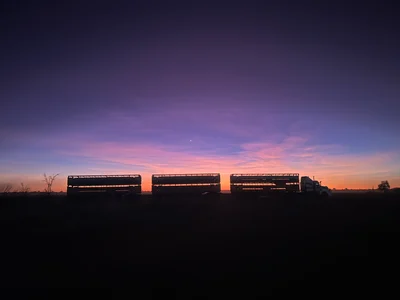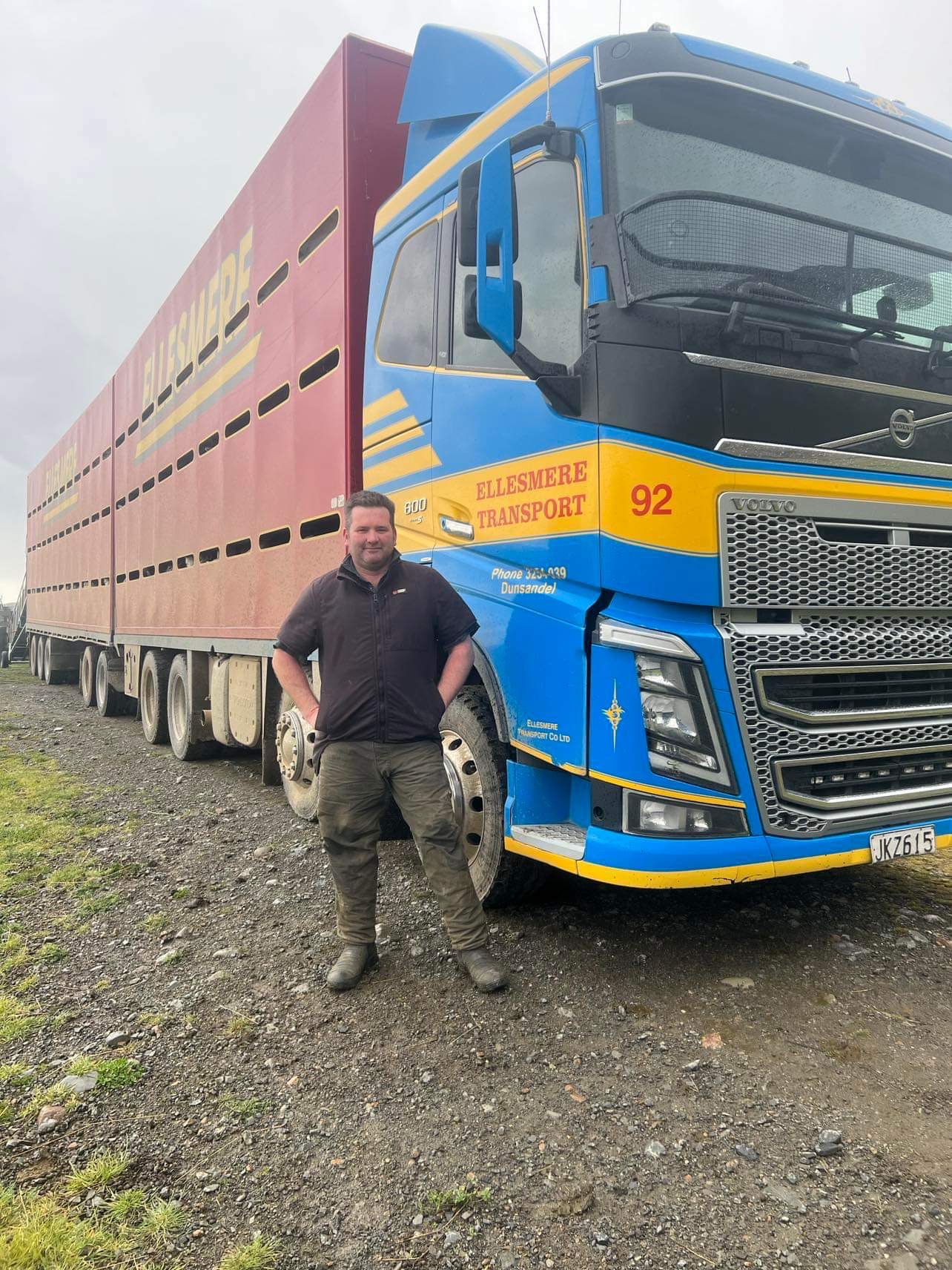Red Dust and Road Trains

Some peoples' bucket list of travel destinations consists of cruises over Mediterranean waters or croissants in French cafes, but not Kent Patterson.
He dreamed of hitting the red dust roads of outback Australia behind the wheel of a mighty Kenworth road train.
In April, that dream became a reality for the 45-year-old Ellesmere Transport driver and former farmer.
"I was in Western Australia 25 years ago and regret not doing this then.
"I thought the opportunity had gone, and I was getting too old, so getting a licence over there might be hard.
"But then the opportunity came up."
Although an experienced driver, it was trial by fire when Patterson arrived for his first day on the job.

"When we turned up, you sit your licence, and then they give you your truck," Patterson says.
"There's no training; you just get told to put your gear in the truck and head out Monday.
"The first few weeks were pretty sketchy."
The Australian-built Kenworth T650, a 600 horsepower beast, would be Patterson's home and workplace for three and a half months as he travelled across Queensland and into the Northern Territory carting cattle.
Unlike stock trucks in New Zealand that measure around 23 metres with truck and trailer units, Patterson's Australian road train, which hauled a third trailer, measured around 50 meters long.
With most roads being single-lane, other vehicles were quick to move to the side at the sight of the formidable trucks, Patterson said.
"We were the biggest trucks on the road, both height and length-wise, so we had the right of way wherever we went."
The sheer height of the trailer units and the corrugated roads meant that trailers tipping over was a constant threat that Patterson had to manage, something he described as his 'greatest fear'.
"Some of the country is pretty average, and the legal height for trailers in Australia is 4.3, and we were 4.6.
"Only livestock trucks are allowed at that height and are non-weight restricted.
"Everything was volume loaded."
Drivers were based at Cloncurry in Queensland, where accommodation was a shared port-a-com, but often, the duration of the trips meant pulling over for a sleep in the truck cab was encouraged.
With some trips being as long as 1600 km in a single day, drivers had to be prepared to rest when needed.
"You have to be a bit of a boy scout.
"You just have to pull over when you are tired or hungry."
The truck cab was a comfortable two-and-a-half times bigger than Patterson's New Zealand truck, with a comfortable bed and facilities to make the long trips bearable.
"They have a fridge and a bed.
"Some guys even ran an inverter to have a microwave in their truck,"
Meals were either in a roadhouse en route or on the side of the road beside the truck, camp-fire style.
Trucks often travelled in convoy, with Patterson's crew including eight visiting Kiwis in addition to the core seasonal Australian drivers.
"A lot of people go for an adventure and then come home."
The cattle trucking season is around nine months, from Easter to December, when larger stations are mustering.
Some paddocks can hold 10-15,000 cattle on stations that can be around a million acres, and truck drivers often can be at a single station for days at a time, carting stock from paddock to paddock.
"Some paddocks can be more than 100 km wide.
"During the muster, they bring in everything – fat cows, skinny cows, dry's and weaners."
Mickey Bulls, young bulls that should have been branded or castrated but have missed previous musters, could be challenging to load, Patterson said.
The Australian drivers were initially wary of the Kiwi driver's stock sense.
Once the New Zealanders proved themselves, their Aussie co-workers relaxed.
"They were quite standoffish initially; I think they thought they might have to babysit us.
"But once they figured out we knew what we were doing and knew our limits, they were sweet," Patterson said.
"I've got some mates here now, and we'll probably be friends forever.
"They are planning to come over here for a visit and load sheep once the season ends, which will be hilarious."
The Australian outback is not for the faint-hearted.

Even in the coolest months, the heat can be intense, with temperatures reaching 35 degrees, which Patterson jokingly describes as "the best winter I've ever had".
Drivers were always keenly aware of what inhospitable wildlife could find its way into a truck cab or be accidentally trodden on in the long grass.
"If it was a really warm day, snakes would be all over the road.
"You'd see dozens of them."
For Patterson, though, it's the landscape itself that has left the biggest impression.
"It's just endless, endless country.
"It just goes on forever, there's no landmarks."
by Claire Inkson

